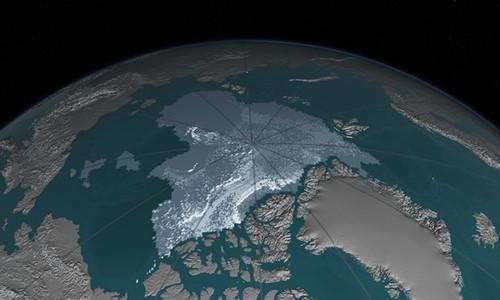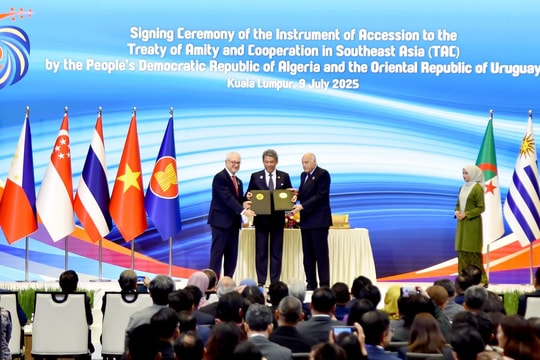$500 billion project to freeze the Arctic to fight climate change
American scientists have proposed the idea of using 10 million giant pumps to bring seawater from under the ice to the surface to increase the thickness of the Arctic ice.
» Priest Nguyen Dinh Thuc incited parishioners
 |
| Arctic sea ice area decreased from 1,860,000 km2 in September 1984 to 110,000 km2 in September 2016. Photo: NASA. |
Steven Desch, a physicist at the University of Arizona, USA, and his colleagues came up with the idea of using 10 million giant wind-powered pumps to bring water from a depth of 1.3 meters below the Arctic ice sheet to the surface during the winter. Cold temperatures cause the water to freeze and thicken the ice cap, according to Nature World News.
The pumps will cover 10% of the region and are estimated to increase the ice layer thickness by 1 meter per decade, helping to protect the Arctic from the harsh effects of climate change. The project is estimated to cost around $500 billion.
Scientists say the COP21 global climate change conference in Paris, France, in 2015 cannot solve the crisis in the Arctic. They are actively looking for new solutions to prevent ice melt, instead of focusing on limiting the use of fossil fuels.
“Our main strategy right now is to limit the burning of fossil fuels. That's a good idea, but we need to do more than that to prevent the disappearance of sea ice in the Arctic,” said Desch.
According to Science Alert, this is not the first proposal by scientists to prevent the phenomenon of ice melting in the Arctic. Some other proposals include spreading aerosols on top of the ice to deflect solar radiation, or using artificial clouds to limit the amount of sunlight reaching the ground.
However, an expert not involved in the study said that the proposal by Desch and colleagues would not be feasible.
"CO concentration2"The rising temperature in the atmosphere is making global warming more and more serious. The excess heat in lower latitudes is transported to the Arctic through atmospheric and ocean circulation. This works against efforts to grow ice in the Arctic," said Julienne Stroeve, a professor at University College London, UK.
Many recent studies show that if there are no measures to limit CO emissions,2, Arctic sea ice in summer will disappear completely by 2030./.
According to VNE
| RELATED NEWS |
|---|








